
This is a data-driven beginners guide for Tarsa. Our previous guide, for General Sloan, was quite popular, so we will try to work through the different starting summoners. The current one is for Tarsa, the Chaos Legion fire summoner. Tarsa is pretty popular and quite successful, but hopefully the current guide will help you boost your win chances even higher.
This guide is based on match statistics that we have collected since the launch of Chaos Legion. We will use data from Silver league, because strategies in Silver league are more refined than in Bronze, while still primarily based on level 1 free-to-play cards. So using this as a basis is ideal for creating a beginners guide, which is the purpose of this post.
The current dataset for Tarsa consists of roughly 500.000 matches. Currently, her win-rate in this dataset sits at 49.6%. With a little more knowledge about how Tarsa works than the average player has, you should definitely be able to climb up in rating by playing Tarsa. Which mana ranges, which rules and which opponents you should play against will be covered below.
Introduction to Tarsa
"The village folk always say that Tarsa was born with fire in her blood, and that is true in many ways. Her burning rage and quick temper are amplified by her powers to summon and control fire." - Splinterlands lore
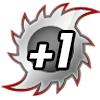

Tarsa uses magic to burn her opponents. In the game, however, she does not provide any bonus to magic monsters. Instead, she increases their melee damage and health. Thus, she is a successor to Malric Inferno, and can use many of the strategies that the fire deck has used for a long time.
Tarsa costs 4 mana, which is one more than Malric Inferno costs. In return, she gets a +1 HP boost to all her monsters, which can be quite important for some of the cheap low-hp fire monsters that can be found in the starting deck.
Since Tarsa gives bonuses to her own team, you get the most value out of her by filling out many slots on your team. Additionally, you want most of the monsters to be melee based, so that you get the +1 melee damage bonus.
Starting deck comments
Below is an overview of the starting cards that are melee attackers. Untamed cards in the first two rows, Chaos Legion cards in the third and fourth rows.
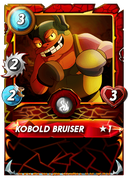
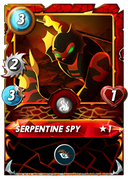
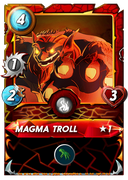
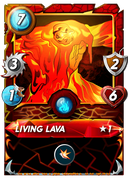
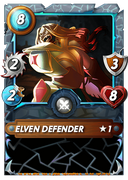
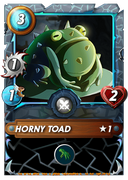

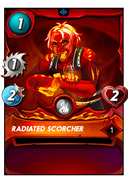


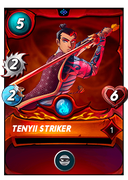
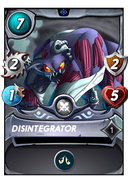
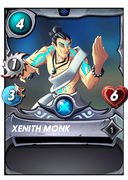
A general melee team setup is a tank in front (Living Lava, Antoid Platoon), a monster with Reach second (Magma Troll, Radiated Brute) and then any monsters you want that has either Opportunity or Sneak. This allows them all to attack in all rounds. Some rules change the setups dramatically, such as Melee Mayhem, where you can use any melee monster in any position, or Super Sneak, where all your melee monsters will be able to attack the opponents backline.
The base fire deck also has access to Cleanse for two mana with this guy:
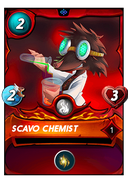
This is very useful for the Noxious Fumes rule, as you can cleanse the poison from your frontline.
You can also find great use in the Repair ability that this guy has:
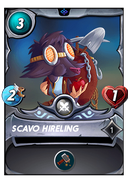
Repair can be used for example to keep your Living Lava or Antoid Platoon alive longer.
Win rate at different manas
The figure above shows Tarsa's win rate at different manas. She has a quite interesting mana profile, where she is not that good at very low or high manas, but pretty great between 16 and 30 mana. A few particular mana levels stand out: 17, 19 and 20 mana. These manas are power spikes for Tarsa, and we will examine why in the team setup section below. The three points that fall below the 50% win rate level between 16 and 30 mana are likely power spikes for other summoners.
At high mana, it becomes difficult for Tarsa to build a team based on the starting deck that consists of many high mana monsters and that are able to attack at the same time. Using ranged or magic monsters is an option, but does not combine well with Tarsas buffs. For this reason, she falls of after 30 mana.
- Play Tarsa in the 16-30 mana range
Win rate in different rules
| --- Rule --- | --- Win rate --- |
| Reverse Speed | 56% |
| Little League | 55% |
| Odd Ones Out | 54% |
| Super Sneak | 54% |
| Equalizer | 53% |
| Aim True | 53% |
| Up Close & Personal | 52% |
| Noxious Fumes | 52% |
| Equal Opportunity | 51% |
| Melee Mayhem | 51% |
| Unprotected | 51% |
| Lost Magic | 50% |
| Target Practice | 50% |
| Healed Out | 50% |
| Rise of the Commons | 49% |
| Spreading Fury | 49% |
| Stampede | 49% |
| Lost Legendaries | 48% |
| Explosive Weaponry | 48% |
| Weak Magic | 48% |
| Close Range | 48% |
| Heavy Hitters | 47% |
| Broken Arrows | 47% |
| Taking Sides | 47% |
| Standard | 46% |
| Holy Protection | 45% |
| Armored Up | 45% |
| Fog of War | 45% |
| Silenced Summoners | 42% |
| Earthquake | 42% |
| Back to Basics | 40% |
| Even Stevens | 36% |
| Keep Your Distance | 36% |
In terms of rulesets, many of them are quite good for Tarsa. Of course, any rule that boosts the power of melee monsters is great for Tarsa. These include Super Sneak, Aim True, Up Close & Personal, Equal Opportunity, Melee Mayhem and Unprotected.
Conversely, rules that hinder melee monsters are terrible for Tarsa, and she does absolutely worst in Keep Your Distance. Rules that limit Sneak, provide armor or give divine shield are also bad for her.
She also does not do well in Silenced Summoners. For one thing, one can just play Pyre in this mode and get one more mana to work with, but the fire deck is also not great without any summoner buff.
Tarsa is good in Noxious Fumes, since she has both cleanse and a few high HP monsters available. She is bad in Earthquake, since she does not have many flying monsters that synergize well with her melee style.
The strangest part about the rule statistics are that she does not do well in Weak Magic, or Broken Arrows. This might be a statistical fluke, but it might also be that she is a predictable choice in these modes, and gets countered often.
Her best win rate is at Reverse Speed. The reason can be seen by examining the speeds of the melee monsters in her deck: The fastest one has 3 speed, while most of them have 2 or 1 speed. Living Lava in particular becomes a much better card in Reverse Speed. Usually, Living Lava can have a pretty high miss chance, and it is catastrophic to miss a hit with it. In Reverse Speed, its miss chance is minimized.
Win rate against other summoners
The table below shows Tarsa's win rate against the other free-to-play summoners:
| Wizard of Eastwood | 70% |
| Contessa L'ament | 68% |
| Mother Khala | 65% |
| Thaddius Brood | 64% |
| Bortus | 63% |
| Pyre | 62% |
| General Sloan | 51% |
| Drake of Arnak | 48% |
| Obsidian | 47% |
| Kelya Frendul | 36% |
Tarsa does best against Wizard of Eastwood and Contessa L'ament. Wizard will often play a style that is somewhat similar to Tarsa, but with a weaker base deck, and without much armor to protect his monsters. So he is often an easy targer for Tarsa.
The death deck also is not particularly strong against tarsa, except for Cursed Windeku. But when it is the only one left standing, it does not hold up to the high damage that Tarsa can dish out. Both Contessa and Thaddius Brood are quite good targets for Tarsa.
Bortus is often fine to face. His ability is mostly irrelevant since Tarsa does not really play any magic cards. If he plays the base water deck, he will not have the damage or defense to be a real threat. However, some extremely powerful water cards are cheap to acquire, so Bortus can easily show up with cards such as Djinn Oshannus, which can be a problem.
General Sloan is an easy target at low mana, but can be tricky above 26 mana (see the beginners guide for General Sloan). Once he can use a taunt and still have enough mana for damage cards, things get difficult.
Drake of Arnak provides armor to every monster he has, which makes sure that you need at least two melee hits to take each one out. With Tarsa's preference for removing cards before they get in any attack, this is a problem. Thus, the win rate is below 50% against him. He will often play Djinn Chwala, which is a strong anti-melee card.
Obsidian is also somewhat difficult, because she naturally focuses all her damage (magic) at a single target, making sure that each round has fewer and fewer monsters. The main fire tank, Living Lava, has shield and armor, which is irrelevant against Obsidians magic damage. Sometimes though, you can take out Obsidian's monsters before they can attack. Thus Obsidian can be beat, but it requires strategy.
The most difficult target for Tarsa is Kelya Frendul. She is a perfect counter to Tarsa, with armor and increased speed. Both effects are problematic for Tarsa. She also has access to a frontline tank with an insane amount of armor (Diemonshark). In addition, the water deck is very flexible, and often supplied with cards such as Venari Wavesmith, which will make the armor of every monster 3 or higher. At 36% win rate, Kelya is a matchup to avoid at any cost.
Team setup
We have established the situations where you want to play Tarsa: Mana between 16 and 30, and preferably a melee favored or neutral ruleset. You should also have an idea about which summoners you can expect to beat and who you have less chances against.
Now, lets look at which monsters you want to use when you decide to play her:
We will not consider every single mana option, but provide an set of examples that should be sufficient as a basis for selecting teams for the remaining mana options. The following team suggestions are based on win rates at each specific mana limit. For each mana limit, we set up the team by exploring which monster combinations have the highest win rates. Positioning is the authors’ suggestion based on examination of a selection of matches, so it is not set in stone.
12 mana

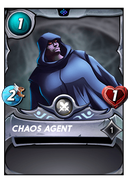


14 mana




16 mana



17 mana



19 mana



22 mana




25 mana




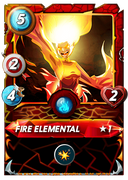
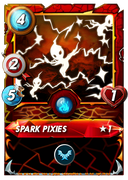
28 mana






30 mana





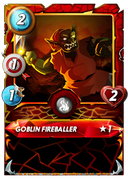
30 is the upper limit of where Tarsa's starting deck seems to perform well. Above that, you should consider other summoners. However, some rules might still make Tarsa a good pick. Especially when melee monsters can attack from all positions, you might still want to play Tarsa. These rules are Melee Mayhem, Super Sneak or Equal Opportunity.
36 mana






42 mana






99 mana
The base deck at does not include any cards that we can insert to improve our win chances above 40 mana. So the 99 mana option is the same as the team above. However, a non-base card setup, borrowing stats from Gold League is:

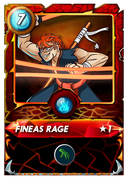


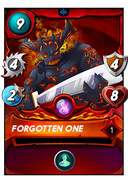

This team is very powerful in a melee-favored ruleset, due to the high damage of each individual monster and the 2x Demoralize, which removes 2 melee damage from your opponents monsters.
This closes out the team setup examples. Hopefully, these examples are sufficient for getting a basic understanding of how to build a team with Tarsa for your matches.
Expanding your deck
If you find that you like to play Tarsa, and you want to expand your deck, the following cards are your best options: They are sorted based on win rate for level 1 cards. The best card is the first one, and we have only included cards that cost less than 5$ at the time of writing:


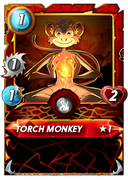
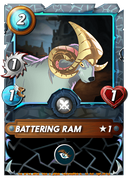

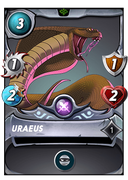



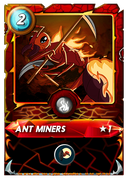
Closing Remarks
We hope you found this guide useful. We have tried to provide a comprehensive guide for Tarsa. Match statistics were used in all parts of this guide. Very little information has been based on the authors' opinions. This makes the guide reliable at the time of writing, but it will also mean that the statistics and best teams presented here can change over time.
Let us know if this guide has helped you, and if you have any other comments or suggestions please let us know.
Please also check out our other content:
Beginner Guides
Beginners guide - General Sloan
Summoner and Card statistics
Best Legendary Cards of Chaos Legion - Week 1 statistics
Chaos summoners - Week 1 statistics
Rule set strategies
We are also creating guides for specific rules. You can find them here:
Strategycorner with Mammuter #5: How to WIN in Reverse Speed
Strategycorner with Mammuter #4: How to WIN in Melee Mayhem
Strategycorner with Mammuter #3: Noxious Fumes
If you would like to see more of this content, please let me know, like and share the post. Also, if you have not yet started playing Splinterlands, you can join and support me and the same time with the following link
Another way to support us is through card delegations or donations. If you want to do that, we are @kalkulus and @mammuter.
Best of luck in Splinterlands!
Kalkulus






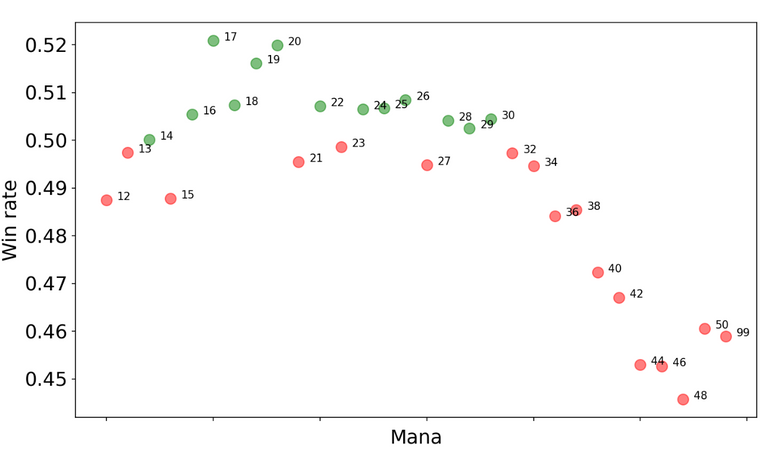
Nice write up. I've found pretty high success rates using Living Lava, Tenyii Striker (or Naga Firemage), Disintegrator, Djinn Apprentice, Djinn Inferno, Lava Launcher in 99 point matches at the top of Silver, bottom of Gold.
Glad you like the post :) The team you mention sounds pretty solid for 99 mana. I haven't played much Tarsa myself at that mana, but I can imagine that Djinn Inferni can often get some value from Giant Killer there. Good option for those players that have access to him, firemage and Lava Launcher.
Congratulations @kalkulus! You have completed the following achievement on the Hive blockchain and have been rewarded with new badge(s):
Your next target is to reach 300 upvotes.
You can view your badges on your board and compare yourself to others in the Ranking
If you no longer want to receive notifications, reply to this comment with the word
STOPCheck out the last post from @hivebuzz:
Support the HiveBuzz project. Vote for our proposal!
Thanks for sharing! - @ashikstd

Well written.
Dear @kalkulus,
The previous HiveBuzz proposal expired end of December.
Do you mind supporting our proposal for 2022 so our team can continue its work next year?
You can do it on Peakd, ecency, or using HiveSigner.
https://peakd.com/me/proposals/199
Thank you. We wish you a Happy New Year!